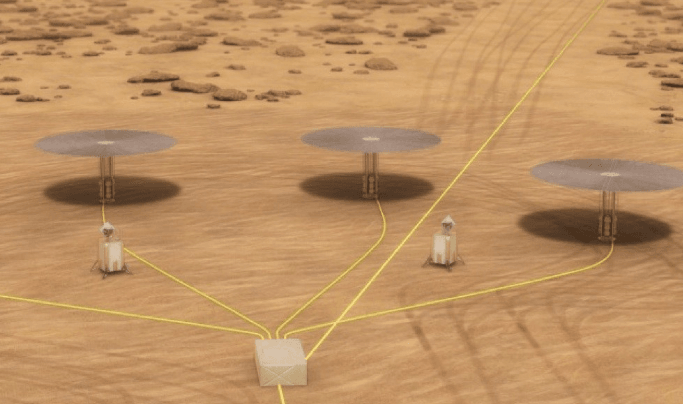NASA has been working on a nuclear reactor that could generate power on-the-go, thus helping in space travel and possibly help humans survive on Mars. On Wednesday, NASA announced that it has successfully tested the nuclear reactor.
NASA’s nuclear reactor, or specifically referred to as a Kilopower portable nuclear fission reactor, has met or even exceeded the expectations in the tests. This means that the NASA nuclear reactor can now be used in more intensive testing. According to the scientists, the test results serve as the first step towards sending the Kilopower technology up into space to power the space expeditions.
Now, the next objective will be to test how the technology performs in flight tests. Kilopower systems with lower energy, like the one-kilowatt variant, can be used to power a basic toaster. The biggest version, a 10-kilowatt reactor, can be used to power bigger equipment.
Still in prototype, the NASA nuclear reactor will prove extremely useful in the space expeditions where there is limited space for supplies. More importantly, these reactors are not dependent on the sun. So, they can be easily used on the planets with less or no sunlight, in shadowed regions and during light-blocking storms.
“As we move further into the solar system, there will come a point where carrying all the materials needed or attempting to resupply becomes hazardous. At this point, our explorers will need to be able to generate their own resources,” said Janet Kavandi, NASA Glenn Research Center director said, at the press conference.
NASA has been carrying out tests for the reactor at the Department of Energy’s Nevada National Security Site. The prototype reactor uses a six-inch chunk of uranium-235 as fuel. The heat generated from the fission reactions is converted into electrical energy. According to the space agency, the NASA nuclear reactor test results exceeded their expectations. They were able to generate an output of more than 4 kilowatts of power at 800 degrees Celsius (operating temperature), with a power conversion efficiency of 35%.
Going forward, the space agency hopes to send small power plants to the Moon and Mars. Currently, it is pretty hard to provide power for such long missions, but the NASA nuclear reactor will give out the needed energy without the need of refueling them. Also, the fuel in these reactors is safe, allowing it to be easily carried into space without damaging the equipment and people in the spacecraft.
Further, the NASA nuclear reactor can be operated easily without much input, something that is very important for long missions. “When we go to the moon and eventually on to Mars, we are likely going to need large power sources not dependent on the Sun,” said James Reuter, acting associate administrator of NASA’s Space Technology Mission Directorate.
NASA’s successful testing of the Kilopower system is surely a big achievement, especially considering it’s the first new fission reactor concept of any kind in the U.S. in 40 years. In the next 18 months, the team will work on the requirements needed to design, develop, certify and fly these NASA nuclear reactors.
In separate news, NASA in a move that surprised many, canceled its only program developing a Moon rover last week. The rover was expected to explore one of the Moon’s poles to search for oxygen, water and hydrogen, something that could have helped future astronauts. The rover has been in development for about a decade.
According to a statement posted on NASA’s Resource Prospector website, some parts of the rover, which is referred to as the Resource Prospector (RP) mission, will still be used in other robotic missions to the moon. Further, the statement claims that the new changes are in line with Trump’s initial instructions, or the President’s Space Policy Directive 1.
The scientific community, however, is disappointed with the latest move. The Lunar Exploration Analysis Group (LEAG), in an open letter to NASA, wrote that this “action is viewed with both incredulity and dismay by our community, especially as the President’s Space Policy Directive 1 directs NASA to go to the lunar surface.”
Further, the letter says that the cancellation of the rover suggests that the space agency is not “serious” about returning to the moon. The letter went on to say that the RP could have been ready for the preliminary design review by 2019, and a potential launch by the 2020s.












